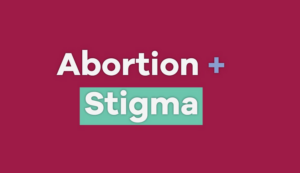
|
Getting your Trinity Audio player ready...
|
Abortion is a topic often shrouded in silence and stigma. Despite its prevalence worldwide, the social taboo surrounding abortion can perpetuate shame and secrecy, making it challenging for individuals to access safe and legal abortion services. In this comprehensive guide, we aim to break the silence and provide insights into how to reduce abortion stigma. We’ll explore the impact of stigma, the importance of open conversations, and practical steps to create a more compassionate and understanding society.
Understand Abortion Stigma
Abortion stigma is a complex web of societal attitudes, beliefs, and stereotypes that cast a shadow of shame on individuals who have abortions or seek reproductive healthcare. It manifests in various forms, from judgmental language to legislative restrictions, creating an environment where those affected often feel marginalized and isolated.
To reduce abortion stigma, we must first understand its roots. Challenging these deeply ingrained beliefs is the first step in dismantling the stigma and fostering empathy and support for those who seek abortion care.
Promote Open Conversations
One of the most effective ways to reduce abortion stigma is by promoting open and honest conversations. When people feel safe discussing their experiences, sharing their stories, and asking questions, the walls of silence begin to crumble. Encourage dialogue in your community, workplace, and social circles, creating spaces where individuals can talk without fear of judgment.
Sharing personal stories can be a powerful tool in this process. When people hear the real experiences of others, it humanizes the issue and highlights the diverse circumstances that lead to abortion decisions. These narratives challenge stereotypes and show that there is no one-size-fits-all abortion story.
Challenge Stereotypes
Abortion stigma often stems from harmful stereotypes. Common misconceptions include the belief that people who have abortions are careless, selfish, or immoral. Challenging these stereotypes is crucial to reducing stigma and fostering understanding.
One way to confront these stereotypes is by sharing accurate information about the reasons people have abortions. Many individuals face complex and challenging circumstances, such as health concerns, economic instability, or personal situations, that make continuing a pregnancy untenable. Highlighting these realities can help dispel harmful myths and encourage empathy.
Empowering Education
Education is a powerful tool for breaking down the stigma of abortion. By providing accurate information about abortion, the medical procedures involved, and the legal rights and access to care, we can empower individuals to make informed choices and reduce stigma.
Legal Rights and Access
Abortion stigma can be perpetuated by restrictive laws and barriers to access. Advocating for legal rights and improved access to abortion services is a crucial component of reducing stigma.
Work with organizations and advocates to push for policies that prioritize reproductive rights and access to safe, legal, and affordable abortion care. Engage in campaigns that raise awareness about the importance of protecting these rights and eliminating discriminatory regulations that hinder access.
Supportive Healthcare
Healthcare providers play a pivotal role in reducing abortion stigma. They must offer compassionate, non-judgmental care and create a safe space for patients. Encourage healthcare facilities to adopt patient-centred approaches that respect individuals’ autonomy and choices regarding their reproductive health.
Furthermore, it supports healthcare providers in offering accurate information about abortion and its options. Training and resources that help professionals understand and address the unique challenges of abortion care can be instrumental in reducing stigma.
Amplify Diverse Voices
Amplifying diverse voices is essential in the fight against abortion stigma. Include individuals from various backgrounds, including marginalized communities, in the conversation. By ensuring that a broad spectrum of experiences is heard. We can shed light on the disparities in access to abortion care. To address the unique challenges faced by different groups.
Encourage Allyship
Allyship is a powerful force for reducing abortion stigma. Encourage people who are not directly affected by abortion to stand up as allies. Provide resources and information to help them understand the experiences and needs of individuals who have abortions.
Allyship involves actively challenging harmful comments or behaviours, supporting those who face stigma, and advocating for equitable access to reproductive healthcare. When more individuals become allies in the fight against abortion stigma, the message becomes stronger and more inclusive.
Conclusion
Reducing abortion stigma is not just a noble endeavour; it’s a critical step toward fostering a society that values autonomy, choice, and empathy. As we conclude this journey, it’s evident that breaking the silence around abortion and challenging stigma requires a collective effort from individuals, communities, and policymakers.
You will find the following information useful:
- Support Offered by Health Caregivers to Patients Seeking Abortion.
- Abortion Access in Rural Areas: Challenges and Solutions
- The Role of Men in the Abortion Debate: Allyship or Control?
- The Landscape of Abortion Care in Texas

